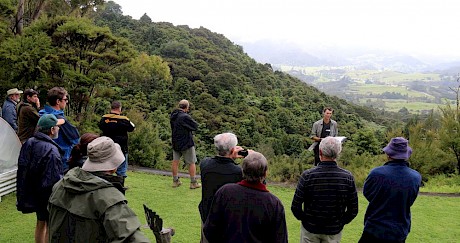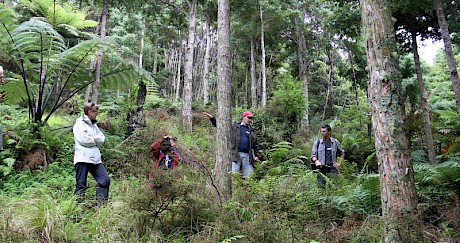Philosophy and Strategy
Tāne’s Tree Trust is a not-for-profit charitable trust that promotes the planting, management and sustainable use of native trees for all the values that these forests provide. We believe that New Zealand needs to better value these forests and be encouraged to plant more and actively manage them.
Indigenous forests of Aotearoa are unique biological and environmental treasures. They are also cultural taonga, part of our cultural heritages, and our identities as New Zealanders. Native forests provide multiple values and have a vital role for our continued existence and well-being.
We believe that kaitiakitanga in relation to native forest, involves an active and meaningful relationship between people and the forest.
Appropriate forest management includes pest and weed control, ecological enhancement, disease management and, in suitable situations, it may also include silvicultural intervention and timber production.
Tāne’s Tree Trust initiates, supports and freely disseminates research into best-practice in all aspects of native tree establishment and native forestry.
We promote native forestry on private land as an appropriate land-use option to achieve many conservation, production and cultural gains.
In particular, we see opportunities for active management in planted native forests and naturally reverted second-growth forests to combine conservation outcomes with timber production and other cultural uses.
We promote the application and continued research into continuous-cover-forestry principles as best-practice sustainable forest management.
Tāne’s Tree Trust recognises that appropriate management of native forest is always dependant on context (i.e. perceived and valued differently by different people in different places at different times) and management objectives will range from maintaining untouched ‘wilderness’ and ecological values through to production orientated goals.
Tāne’s Tree Trust advocates a site-specific management approach with careful consideration in respect to the wider landscape and cultural settings – Native forests for now and for the future.
Whatungarongaro te tangata, toitū te whenua
As people disappear from sight, the land remains


